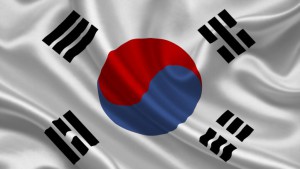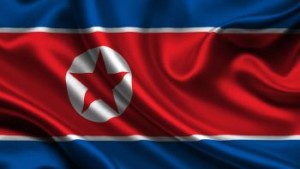Car Hire Korea
Rental Car Korea
RentaCarBestPrice.com compare prices from a number of car rental companies and find the best price on car hire. Book with us and get necessary insurance and unlimited mileage included in the price.

Are you looking for affordable car hire? Now a day’s it is very popular to rent a car, the majority choose to pick up a car at the airport. With car rental you and your family have the opportunity to take pleasant day trips in the areas surrounding, also you will not be dependent on public transport. By comparing prices of car rental from several players, you can save a lot of money. If you prefer to retrieve the rental car in the city center, this is also possible.
The country offers great natural and cultural experiences. It is advisable to book your car rental well before departure, so you’re sure to get just the car that suits you, at the lowest price. In certain periods there may be high demand among rental companies, and the cheapest cars are usually taken first.
Korea short guide

Car Hire South Korea

Car Hire North Korea
The first 200 years of Joseon were marked by relative peace and saw the creation of the Korean alphabet by King Sejong the Great in the 14th century and the increasing influence of Confucianism. During the later part of the dynasty, however, Korea’s isolationist policy earned it the Western nickname of the “Hermit kingdom”. By the late 19th century, the country became the object of imperial design by the Empire of Japan. Despite attempts at modernization by the Korean Empire, in 1910, Korea was annexed by Japan and remained a part of Imperial Japan until the end of World War II in August 1945.
In 1945, the Soviet Union and the United States agreed on the surrender of Japanese forces in Korea in the aftermath of World War II, leaving Korea partitioned along the 38th parallel, with the North under Soviet occupation and the south under U.S. occupation. These circumstances soon became the basis for the division of Korea by the two superpowers, exacerbated by their inability to agree on the terms of Korean independence. The Communist-inspired government in the North received backing from the Soviet Union in opposition to the pro-Western government in the South, leading to Korea’s division into two political entities: North Korea and South Korea. This eventually led to war in 1950, which became the Korean War. The war did not produce a formalized peace treaty, a factor that contributes to the high tensions which continue to divide the peninsula.
Traffic and Driving Tips South Korea
Foreign drivers can drive in South Korea with their International Driving Permits for one year from the date of entered to the country. They can only drive the type of vehicles specified in their International driving permits. The International Driving Permits is not available for driving business-purpose cars.
The head of the local police department has the right to prohibit a foreign driver from driving with the International driving permit for up to 1 year, if the driver:
has not taken or failed a regular aptitude test;
has produced a traffic accident by intent or as a result of carelessness;
has violated the Korean road traffic rules.
Any driver may recover the prohibited International driving permit upon the elapse of the prohibition period or upon departing from Korea during the prohibition period.
If a foreign driver drives a car without International driving permit or with an expired International driving permit, he will be fined or even imprisoned for up to one year.
In the center of the major cities, road signs are written in both English and Korean nationwide languages. Parking is often a serious problem since too many automobiles in Korean cities.
Driving is on the right side of the road.
Speed limit and distance are shown in kilometers.
Right Turns on red are allowed after coming to a complete stop; at many large intersections, drivers can turn to right on a specific right turn light.
Left turns are generally prohibited except where there is a left-turn light.
In city roads, the right hand lane is indicated by a blue line and is the “Bus Only Lane”; cars with less than six persons are prohibited to use this lane. On expressways, bus lines are indicated by a blue line and can be used only by buses and 9-passenger vans having at least 6 passengers on weekends and holidays.
In Seoul, median bus line marked in red may only be used by buses.
The minimum driving age for cars is 18 years, for motorbikes – 16.
Speed limits are generally: on expressways – 100 km/h (60 mph); on highways – 80 km/h (50mph); on rural roads – 60 km/h (40 mph); in urban areas – 50 km/h (30 mph).
Set-belts are mandatory; drivers are responsible to have all passengers wear seat belts.
Children may be ridded in the front seat only with a seat belt or in an appropriate child car seat.
Police phone number is 112.
The legal blood-alcohol level is 0.05%.
At intersections without “Stop” / “Yield” signs: the first vehicle in the intersection is allowed to go ahead; if two drivers reach an intersection at the same time, the vehicle on the right has the right-of-way.
When a pedestrian is in a crosswalk, vehicles must stop completely.
It is prohibited to pass a school bus when it is used to receive/deliver passengers and indicated by flashing lights. Vehicles traveling in either direction of a stopped school bus must stop.
In designated areas of major cities, using of horns is prohibited.
While driving, drivers may only use cellular phones with hands-free devices.
It is prohibited to park vehicle within 9 meters (30 feet) of any flashing, stop, yield, or traffic control signals located at the side of the roadway. It is also prohibited to park vehicle within 6 meters (20 feet) of a fire hydrant, crosswalk, bus stop, or intersection.
Warning devices (including a red reflective triangular warning sign or a flashing light) must be in a car at all times.
Traffic and Driving Tips North Korea
In North Korea, each lane has a different speed limit, regardless of what section of road you are on. The first lane is reserved for senior officials, so they can drive at whatever speed they want. It amazed me that in South Korea, regardless of who you are, you can be reported for violating the speed limit.”
Driving in North Korea, the speed limit regulations differ depending on which lane you are driving in. The limits are 70 km/h, 60 km/h and 40 km/h for the first, second, and third lanes, respectively.
For those living in the ‘third lane’, there is no possibility to change lanes.
In most of the world, speed limits exist for safety considerations. In North Korea, speed limits exist to reinforce the social hierarchy.
Airports South Korea
Cheongju International Airport
Daegu International Airport
Gimhae International Airport
Gimpo International Airport
Gwangju Airport
Incheon International Airport
Jeju International Airport
Muan International Airport
Yangyang International Airport
Yeosu Airport
Ulsan Airport
Wonju Airport
Airports North Korea
Pyongyang Sunan International Airport is the primary airport serving Pyongyang and the country’s primary international gateway.
Changjin Up Airport
Chongjin Airport
Hyon Ni Airport
Kaechon Airport
Kang Da Ri Airport
Kangdong Airport
Kuum-Ni Airport
Kyongsong-Chuul Airport
Mirim Airport
Onchon Airport
Panghyon Airport
Samjiyŏn Airport
Sonchon Airport
Sungam Ni Airport
Taechon Airport
T’aet’an-pihaengjang Airport
Toksan Airport
Uiju Airport
Popular Destinations Korea
Busan – Gimhae Airport – Chungcheong do – Daegu – Daejeon – Gangwon Do – Gwangju – Gwangju Airport – Gyeonggi do – Gyeongsan do – Secheon Airport – Incheon – Incheon International Airport – Jeji do – Jeji Airport – Jeol la – Xeosu Airport – Seoul – Seoul Gimpo International Airport – Ulsan – Ulsan Airport

